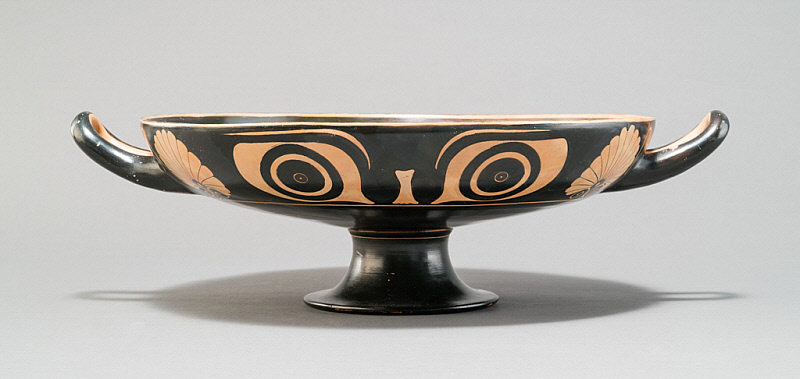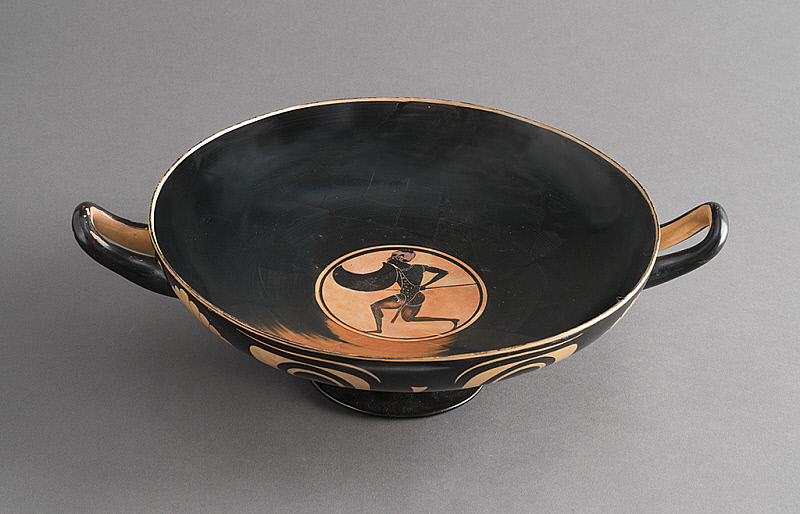Vases that demonstrate both black-figure and red-figure techniques earn the special moniker “bilingual.” Bilingual vases were first produced in the Late Archaic period (about 530–490 BCE) when red-figure was a new technique gaining popularity. This wide, shallow cup known as a kylix (plural kylikes) has been attributed to the vase painter Epiktetos (active between 520 and 490 BCE) by the style of the eyes on the exterior. Epiktetos, belonging to the experimental Pioneer Group (active 525–500 BCE), was an early adopter of the red-figure technique and produced a number of bilingual cups early in his career. The degree of the restorations of this kylix, however, calls into doubt the attribution to Epiktetos. Visual analysis of the cup revealed that it was broken into at least 52 fragments and heavily restored, possibly from pieces of different vessels, sometime prior to arriving at the Menil Collection. The restoration seamlessly connects the ancient extant pieces with modern clay fill to make the cup look complete, but viewing it in natural light highlights the differences between the materials.
On this reassembled fragmentary cup, a representation of a single Black African warrior in black-figure appears in the interior. Along with the incised details of his tunic and face, red paint highlights the lips and hair of the figure and the eight-pointed star on his shield. The half-moon-shaped shield is a pelté (pelta), and warriors carrying it are referred to as Peltasts, lightly armed mercenaries who typically used javelins as their main weapon. While there are depictions of Greek warriors with pelté shields, they are more often carried by non-Greeks. On both sides of the cup’s exterior, the over-life-sized eyes, palmettes, and central nose were created using red-figure.
In both black- and red-figure techniques, the vase painter applies a slip (a thin mixture of clay and water that turns black during firing) to the vase, rather than paint, to create the image. In black-figure the slip is added to the main elements of the scene, while the original clay appears as the background and in the incised lines detailing the black decoration. Red-figure technique is the reverse of black-figure: the slip is added to the background and inner details of the decoration, which appears on an orange-red background that is the color of the clay.
This particular style of kylix is known as an eye cup for the distinctive facial designs on each side. Although the kylix is reconstructed, with one exterior side being almost entirely a restoration, the surviving pieces reveal that it had a similar design to the other side. In ancient Greece, the kylix was used at male-oriented aristocratic drinking parties known as symposia, popular among the upper echelons of Athenian society during the Archaic (600–480 BCE) and Classical (480–323 BCE) periods. Wine was served from a mixing vessel into cups such as this example. As one would drink from the cup, the imagery of the eyes and nose, as well as the vase shape itself, would act as a mask and could spark conversation. Unlike the fully visible exterior images, the interior image was not revealed until after the partygoer had partially emptied the cup of wine. Athenian vases used in the symposium were a popular export to Italy, often recovered from tombs where they had been repurposed as part of a funerary banquet set.


